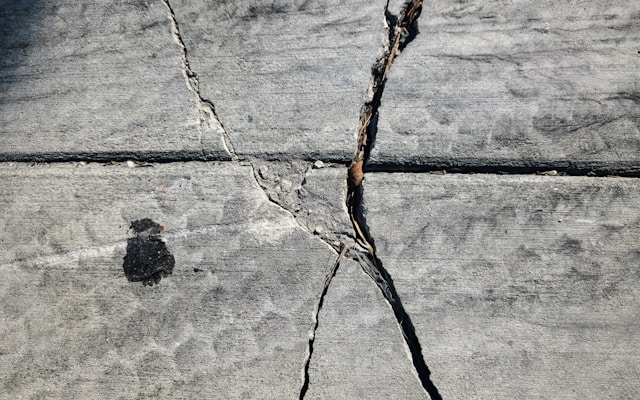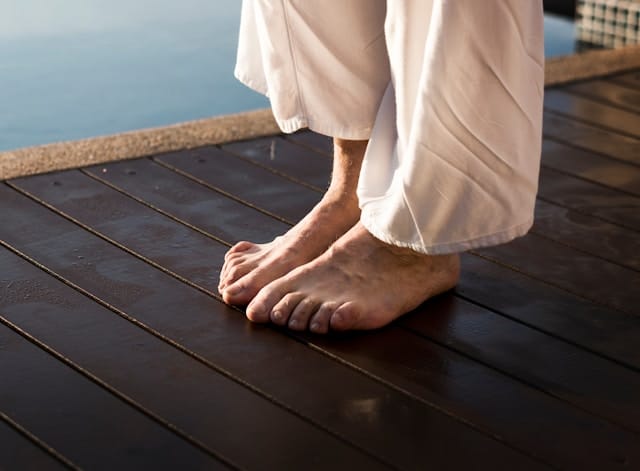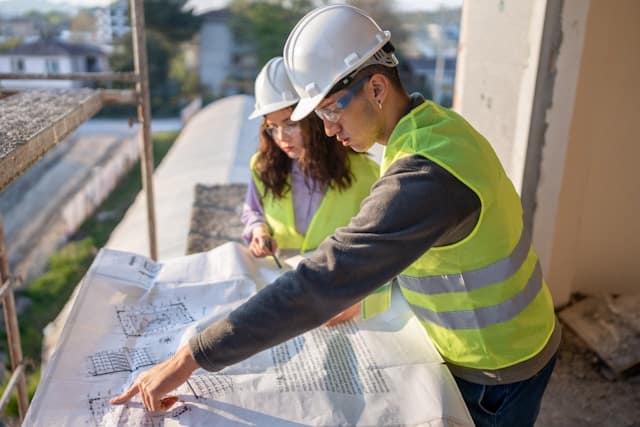Introduction
Planning a custom home or a new build in Florida? The cheapest time to fix soil problems is before you pour a slab. A short, well‑planned pre‑construction program— soil testing + targeted ground improvement — lets you build with confidence and avoid the cracked finishes, sticky doors, and costly foundation fixes we see when sites skip due diligence.
“An ounce of prevention is worth a pound of cure — once a home is finished, foundation repairs can easily cost twice as much as pre‑construction stabilization.”
— David Grindley, PE, Grindley Williams Engineering
Why Florida sites need testing (even “good” lots)
Florida’s subsurface varies block‑to‑block:
– Loose sands & fill (coastal/urban infill) → low density and unpredictable settlement.
– Organics/peat (former wetlands, filled swales) → compressible layers that “squish” under load.
– Problem clays (pockets in Central/North FL) → swell when wet, shrink when dry, lifting/settling slabs.
– Karst/void risk (many inland corridors) → raveling soils that undermine bearing.
Skipping testing invites differential settlement—the kind that shows up as stepped cracks, out‑of‑square openings, and sloped floors. In rare cases, karst‑related voids can create far bigger problems. Testing identifies the risks; Helicon’s ground‑improvement solutions eliminate them before you build.
The testing stack (fast, practical, and right‑sized)
Day 1: Site walk + shallow checks
A trained eye plus near‑surface exploration often finds the easy stuff early—buried debris, stumps, soft fill, or grading pitfalls—so you can correct them before form boards go up.
Day 2 (when indicated): Non‑destructive scans
GPR (ground‑penetrating radar) and/or electrical resistivity locate anomalies (loose zones, possible raveling) to target borings efficiently. Scans show “echoes,” not diagnoses—so they guide the next step.
Targeted borings & in‑situ testing
– SPT (Standard Penetration Test) recovers samples and measures blow counts—ideal for both soil ID and relative density/strength.
– CPT (Cone Penetration Test) provides a continuous soil profile quickly; great for stratigraphy and target selection.
Lab work where it matters
– Organics threshold: If >5%, that soil isn’t suitable to support foundations without mitigation.
– Clays: Plasticity/swell tests determine heave potential and inform foundation choice.
Typical timing: Most residential/small commercial investigations fit a two‑day field effort, followed by lab work and a concise report—fast enough to keep your schedule intact.
From findings to fixes: Helicon’s proven pre‑construction solutions
Compaction Grouting (a.k.a. Pressure Grouting) — Helicon’s specialty
Helicon stabilizes weak or voided soils by injecting a low‑mobility, high‑strength grout under controlled pressure. The grout compacts and densifies surrounding soils, fills hidden voids, and creates a reliable bearing matrix beneath future slabs and footings—before any concrete is placed.
Where it shines – Loose sands or fill beneath future foundations and pool decks
– Sites with suspected raveling or karst‑related void potential
– Infill lots with unknown fill history
Benefits – Targets problem zones precisely
– Minimal spoils and surface disruption
– Fast installations that fit tight pre‑construction timelines
Pre‑Construction Helical Piers (Deep Support)
When borings show persistent weak layers or organics at depth, helical piers provide a clean, code‑accepted deep foundation solution. Shafts with helical plates are advanced to competent strata and locked off to design loads—ideal for home foundations and pools where serviceability (settlement control) matters.
Benefits – Immediate load capacity verification (torque correlation)
– Small equipment footprint, excellent in tight access
– Predictable, engineer‑stamped performance
Engineer’s note: Knowing the soil profile expands your playbook—you can select the most economical, least disruptive fix (grout vs. helical) with confidence.
What testing costs vs. what failures cost
Upfront engineering soil testing (typical ranges):
– Shallow testing & site exploration: ~ $2,500 (typical for small, less complex sites).
– Non‑destructive scans + selective deeper borings: often under ~$6,000 for clarity on larger, more complex sites.
Pre‑construction stabilization (broad ranges):
– Compaction Grouting (Pressure Grouting): $30,000–$100,000+ depending on depth to limestone, grout volume, and targeted treatment area.
– Pre‑construction Helical Piers: $30,000–$100,000+ depending on pier count/length, design loads, and whether you’re supporting the home foundation and/or the pool.
Disclosure: Final scope and price always depend on the geotechnical findings, structure size/weight (load paths), access, and engineering requirements.
After‑the‑fact repairs:
Cutting finished floors, underpinning interior load paths, retiling, rehanging doors/windows, and fixing finishes quickly multiplies costs—commonly 2× (or more) the price of prevention. For larger or complex homes, repairs can run into the hundreds of thousands of dollars compared to pre‑construction techniques used prior to building.
Your step‑by‑step playbook (homeowners & builders/GCs)
- Kickoff & footprint review – Confirm loads, elevations, drainage, and known fill history.
- Day 1 fieldwork – Site walk, shallow checks, quick grading fixes where obvious.
- Day 2 diagnostics (as needed) – GPR/ERT to target borings efficiently.
- SPT/CPT borings + lab – Verify organics %, identify clays, establish bearing & settlement criteria
- Design the fix – Choose compaction grouting or helical piers (or a smart combination) to meet bearing and serviceability targets.
- Install before concrete – Document injection logs/torque values for QA.
- Pour with confidence – Foundations on stabilized soils, backed by engineering.
Florida Statewide Service (with 3 Offices)
We service the entire State of Florida. Our three operational hubs enable fast mobilization statewide:
Tampa, FL Office
11103 N 46th St Bldg B
Tampa, FL 33617
Orlando, FL Office
4260 Church St. Ste 1340
Sanford, FL 32771
Fort Myers, FL Office
5011 Luckett Rd. Ste 7
Local Hubs & Cities We Frequently Serve (≈2.5‑Hour Radius Logistics)
Tampa Bay & West Central: St. Petersburg, Tampa, Clearwater, Largo, Pinellas Park, Palm Harbor, Tarpon Springs, New Port Richey, Spring Hill, Brooksville, Brandon, Riverview, Valrico, Plant City, Lakeland, Wesley Chapel, Land O’ Lakes, Lutz, Odessa.
Southwest Florida: Sarasota, Bradenton, Venice, North Port, Port Charlotte, Punta Gorda, Cape Coral, Fort Myers, Estero, Bonita Springs, Naples and nearby communities.
Central Florida (Orlando Metro): Orlando, Winter Park, Maitland, Lake Mary, Sanford, Altamonte Springs, Apopka, Ocoee, Clermont, Kissimmee, St. Cloud, Davenport.
Real‑world examples (watch & read)
- Compaction Grouting case videos:
- Helical Piers for Pre‑Construction Pool Support (project):
Want the backstory? Watch our On Solid Ground episode with David Grindley on why shallow checks, GPR, and borings pay for themselves during design.
FAQs
How long does soil testing take?
Most projects fit a two‑day field window, then lab analysis and a concise report. We coordinate with your builder and geotech to keep the critical path moving.
What if scans flag an anomaly?
Use it to target borings. If borings confirm loose/raveling zones, compaction grouting is our go‑to to densify and fill voids. If persistent weak layers extend deeper, helical piers carry loads to competent strata.
Is it ever OK to “just scrape and build”?
If organics are >5%, you’re inviting future settlement. Remove/surcharge or bypass with engineered support (grout and/or helicals) based on the geotechnical report.
Can you support both the home and the pool?
Yes. We frequently design integrated solutions—compaction grouting to stabilize bearing soils and helical piers for concentrated loads and pool perimeters where required by engineering.
Download: Pre‑Build Soil Testing Checklist (PDF)
Click here to download your Pre-Build Soil Testing Checklist.





